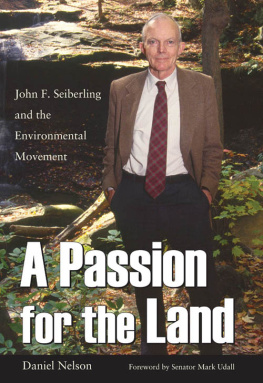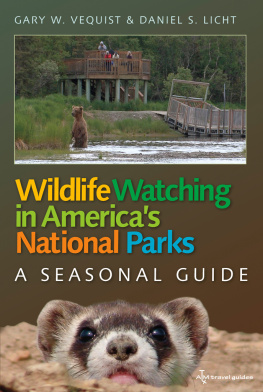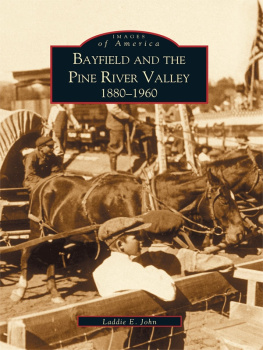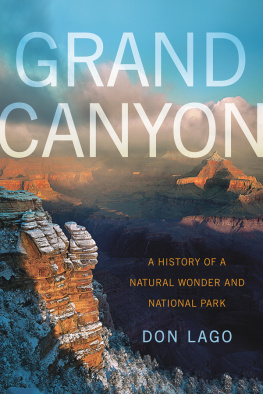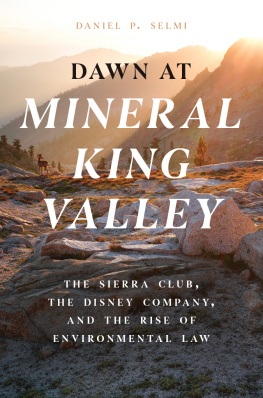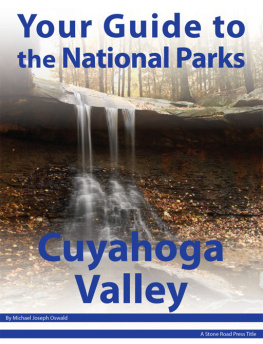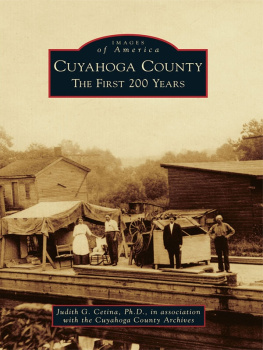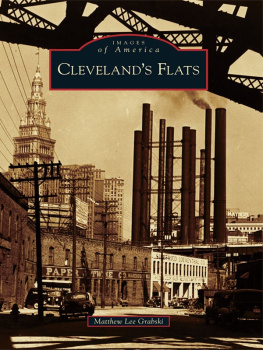2009 by The Kent State University Press, Kent, Ohio 44242
ALL RIGHTS RESERVED
Library of Congress Catalog Card Number 2009016414
ISBN 978-1-60635-036-2
Manufactured in the United States of America
LIBRARY OF CONGRESS CATALOGING-IN-PUBLICATION DATA
Nelson, Daniel, 1941
A passion for the land : John F. Seiberling and the environmental movement /
Daniel Nelson.
p. cm.
Includes bibliographical references and index.
ISBN 978-1-60635-036-2 (hardcover : alk. paper)
1. Seiberling, John F. 2. Seiberling, John F.Political and social views.
3. LegislatorsUnited StatesBiography. 4. EnvironmentalistsUnited States
Biography. 5. United States. Congress. HouseBiography.
6. EnvironmentalismOhioHistory20th century. 7. Cuyahoga Valley
National Park (Ohio)History. 8. OhioEnvironmental conditions.
9. OhioPolitics and government1951 I. Title.
E840.8S44N45 2009
328.73'092dc22
[B]
2009016414
British Library Cataloging-in-Publication data are available.
13 12 11 10 09 5 4 3 2 1
Foreword
Mark Udall, U.S. Senator, Colorado
I am impressed with the wisdom and balanced approach of this book and the excellent view that it gives us of the record of John F. Seiberling of Ohio.
While I did not have the opportunity to serve with John, I knew of his distinguished career and especially of his being a longtime friend and colleague of my father, Morris K. (Mo) Udall, both during and after his own service in the House of Representatives. John and my father not only served at the same time, they worked closely together on many measures that came before what was then the House Committee on Interior and Insular Affairsnow known as the House Natural Resources Committee. My father chaired the full committee and for ten years John chaired, sequentially, several of its subcommittees.
Examples of their accomplishments include legislation dealing with the strip-mining of coal, the Surface Mining Control and Reclamation Act, finally signed into law by President Carter after President Ford had vetoed earlier versions; the Alaska National Interest Lands Conservation Act, ANILCA (also known as the Alaska Lands Act), which was signed into law on December 2, 1980; and numerous acts for the designation of millions of acres of wilderness throughout the country.
Also, for many years John Seiberling was the voice of historic preservation in the Congress. He authored the legislation that created the Historic Preservation Fund and the 1980 Amendments to the National Historic Preservation Act, and he helped win passage of the first federal tax credits to preserve historic buildings.
Indeed, both as a private citizen and a public leader, John inspired and elevated the stewardship of our nations land and its natural and cultural heritage. At home, he was a leader in saving the historic heritage of Ohio, including his birthplace, Stan Hywet Hall in Akron. And while he was the shepherd in Congress of more than sixty national park-related bills, he took special pride in writing and achieving the enactment of the act to protect the Cuyahoga Valley between Akron and Cleveland as a national recreation area, now a national park.
As his hometown paper, the Akron Beacon Journal, put it on August 5, 2008:
John F. Seiberling often explained that in preserving land, we preserve something of ourselves. One generation sends an enduring message to its successors about what it holds dear. Who has forgotten the wisdom of Theodore Roosevelt and others advancing the cause of national parks? In that same way, Mr. Seiberling long will be remembered... for his vision in seeking to preserve 33,000 acres in Northeast Ohio, a vast urban parkland between Akron and Cleveland, and then having the political skills to turn the dream into reality.
The same editorial also noted an important point about Johns character and why he was so effective here in Congress and back home:
Almost anyone who spent time with Mr. Seiberling soon encountered his intelligence and wit. What his legislative colleagues and others appreciated was his modesty and civility, He listened to opposing views. Perhaps that stemmed from his own story, the scion of the family that founded Goodyear becoming a liberal Democrat. His calm, informed and reasoned approach proved most effective in aiding his causes. It meant that when he got his back up (say, his snapping Who the hell are you? at James Goldsmith, the corporate pirate seeking to consume Goodyear), his passion proved all the more persuasive.
Most telling, John knew who he was and didnt pretend otherwise. With his devoted wife Betty at his side, he cut a national profile conserving public lands while at the same time he understood his leading role in representing the city of Akron and its surroundings. He brought federal backing to the Akron-Canton Airport, the Goodyear Technical Center, and other projects critical to the community. He didnt duck confrontations. He felt comfortable in his own skin and at ease in the face of opposition.
John led an admirable life. He might have been content to become the fine attorney and avid amateur photographer that he was. Instead, he jumped into the political fray and in doing so provided an example of what it means to pursue the highest standards of public life. That is something very much worth remembering and preserving.
This book builds on the legacy of John F. Seiberling and lets us know why he was a man whose principled legacy was so sound and so in the foreground.
Preface
This project originated nearly twenty years ago, shortly after John Seiberlings retirement from Congress. Loretta Neumann, a member of his subcommittee staff and a personal friend, began to collect material from Seiberlings sixteen-year congressional career and to interview individuals who had worked closely with him. Her goal was a biography. As the materials kept accumulating and she became involved in more pressing assignments, that goal gradually receded into the future. By the early years of this century she had a treasure trove of materials but still not enough free time to do the subject justice. I entered the picture in 2006, largely because of my familiarity with Seiberlings role in crafting the Alaska National Interest Lands Conservation Act, which had been the focus of my Northern Landscapes, published in 2004. As a professional historian I was also accustomed to working with the archival materials that were essential to this study. Although I am solely responsible for the research, organization, writing, and interpretative judgments that emerge from this account, I have been the beneficiary of Lorettas diligence and generosity. Her materials, together with Seiberlings private papers and the two major collections of his office files, have made possible this story of his contributions to environmental politics and environmental legislation.
John Seiberling was a legendary figure in Ohio politics and an indisputably significant contributor to the campaign to make the U.S. government more environmentally aware and responsible. He is worthy of a full-scale biography, one that examines in depth his personal life, beliefs, motivations, and interests. I have touched on all these topics, but only to the degree necessary to explain his involvement in the environmental movement of the last third of the twentieth century and his lasting impact on the nations public lands.

